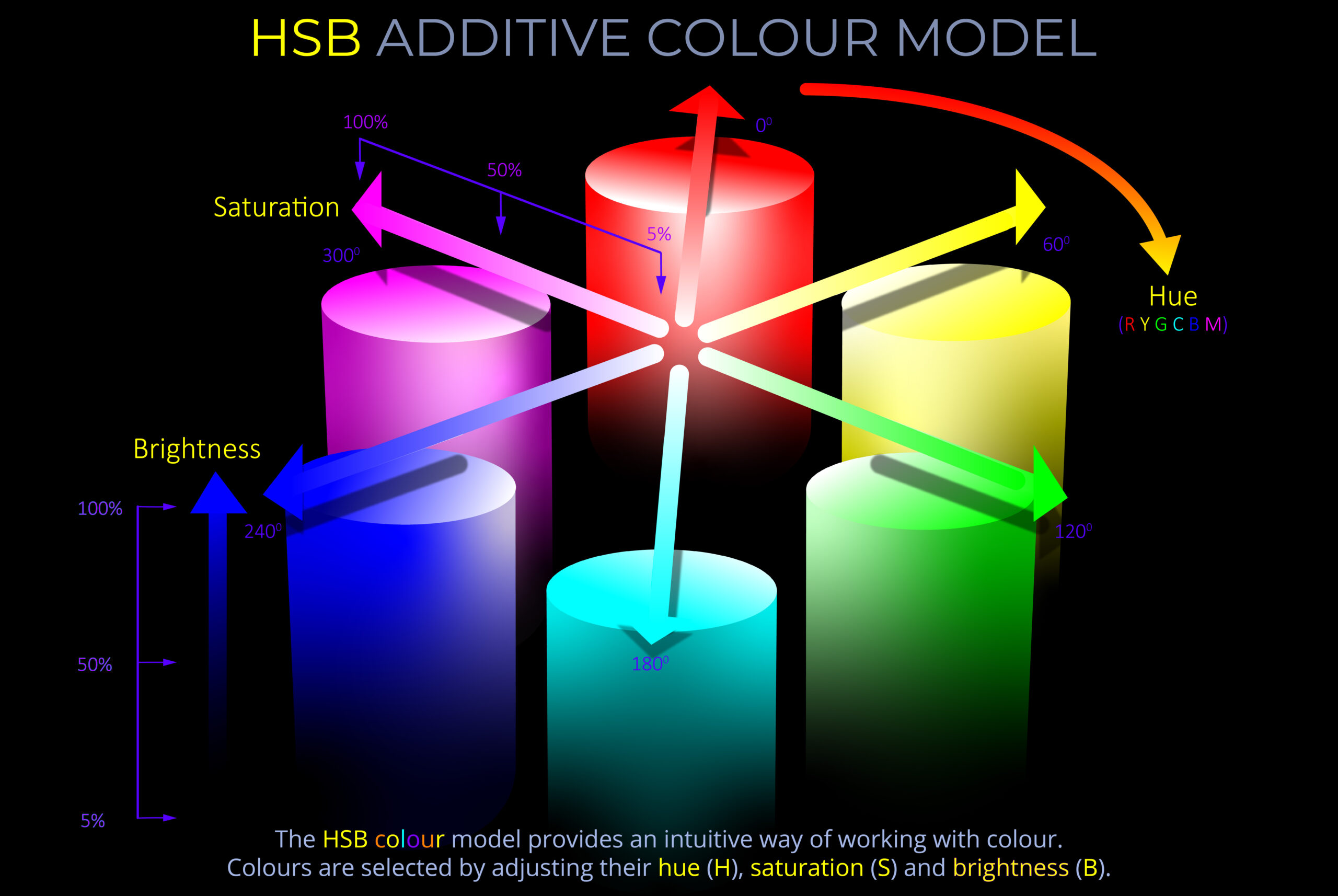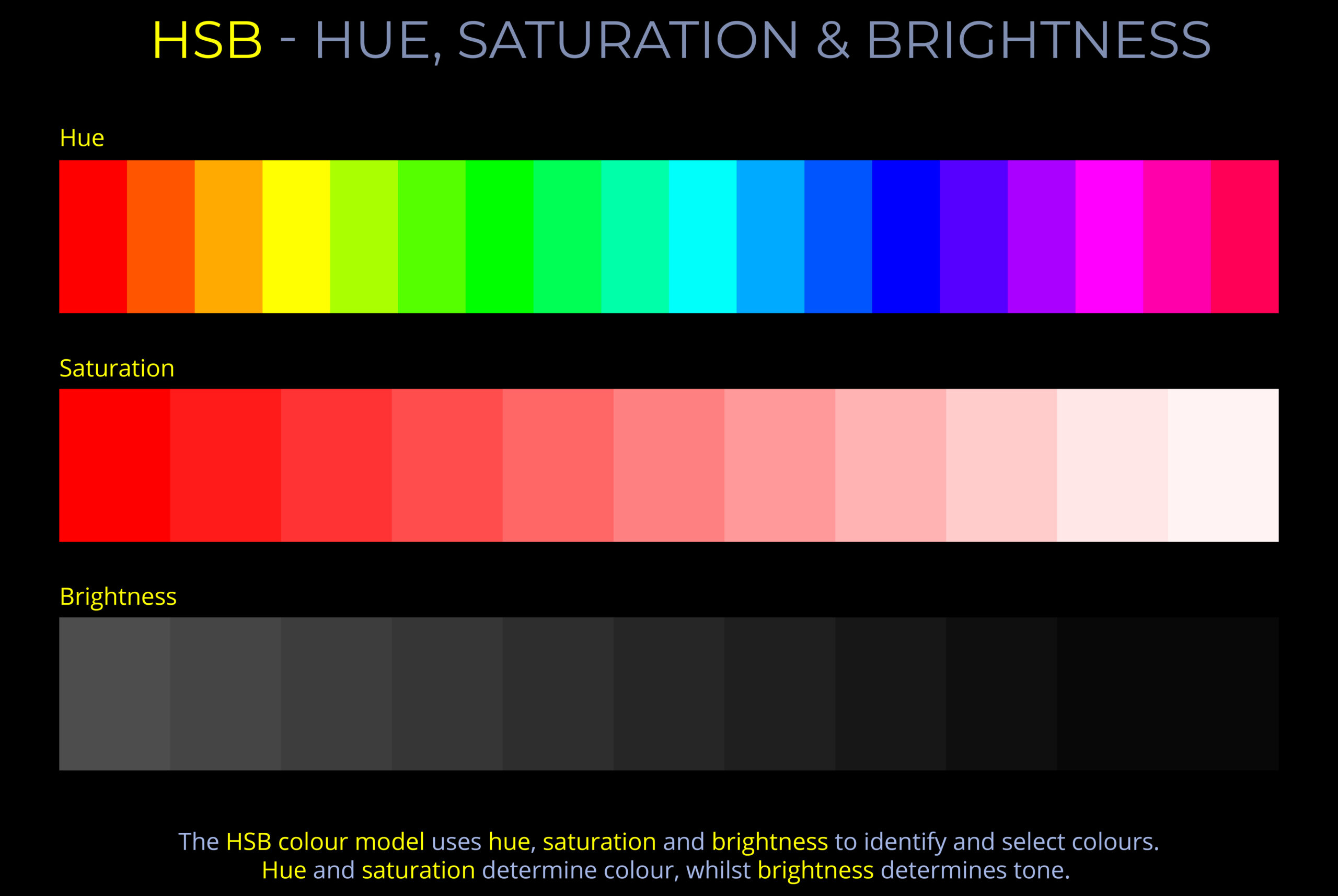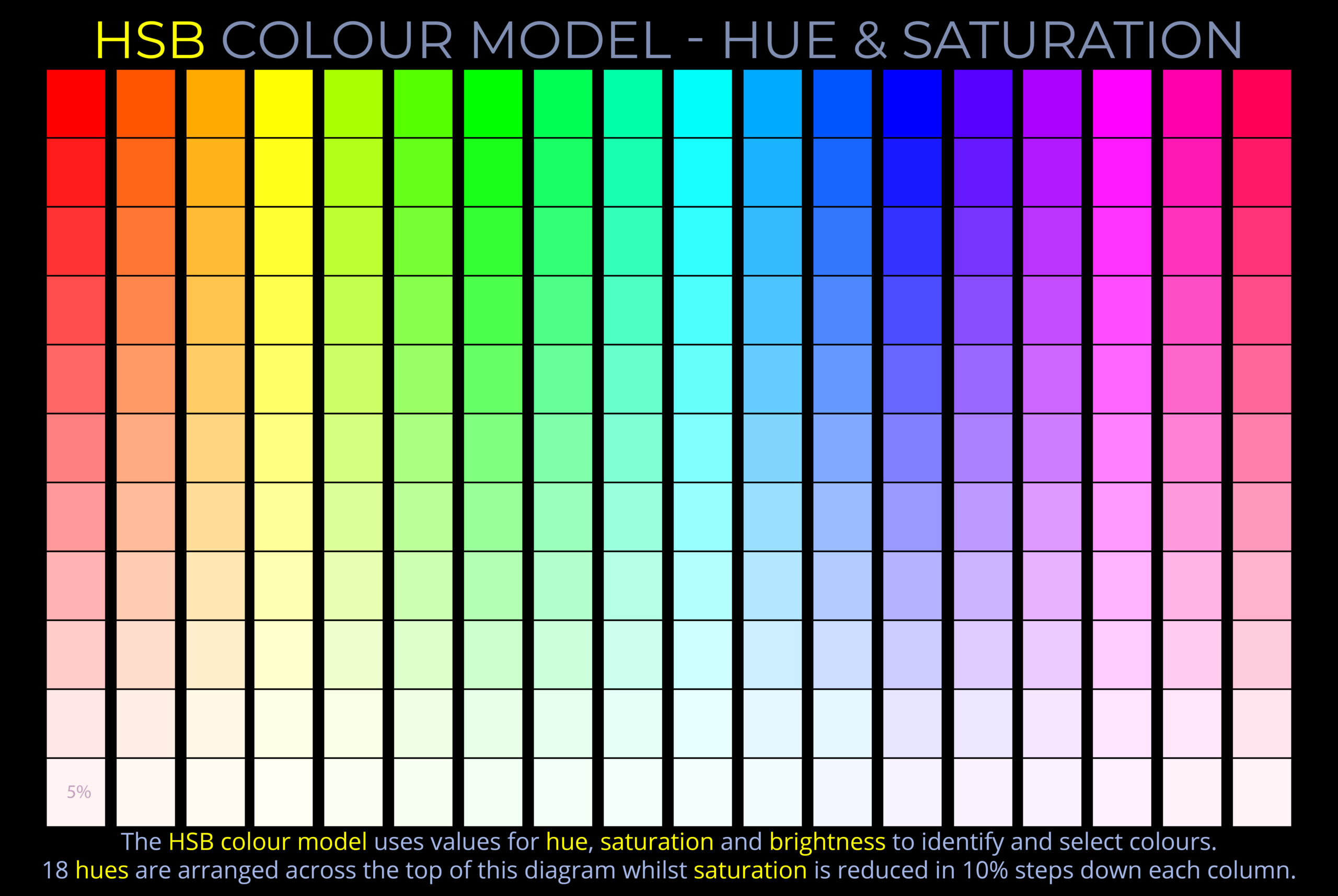Saturation refers to the perceived difference between one colour and another in terms of its purity and vividness. The hue of a vivid colour appears to be at full strength and can leave an after-image of its complementary colour as an observer looks away.
- A fully saturated colour appears bright and vibrant because it has a single strong dominant hue.
- A freshly cut tomato is a good example of a saturated colour with a strong red hue.
- A saturated colour is a unique spectral colour produced by a single wavelength (or a narrow band of wavelengths) of light.
- A fully saturated colour (100%) is the purest version of a hue.
- Unsaturated colours (0-10%) can appear:
- Misty or milky the nearer they are to white.
- Dull and washed out as their hue disappears leaving achromatic grey tones.
About saturation & wavelength
- Saturation is one of the three primary properties of colour, alongside hue and brightness.
- A colour looks saturated when made by a single or a small range of wavelengths.
- A colour made by one wavelength of light is often referred to as a pure spectral colour.
- Unsaturated colours appear faded due to a wider range of wavelengths.
- Saturation is linked to the complexity of light.
Light complexity
- Light complexity, linked to saturation, refers to the quantity and range of wavelengths of light used to create a colour.
- Spectral colours are simple because they consist of just one wavelength of light.
- Bands of colour are relatively simple because they are composed of a continuous range of wavelengths.
- Non-spectral colours can be produced from a mix of many wavelengths from different parts of the spectrum, making them the most complex.
- In reality, colours are often produced by complex combinations of wavelengths.
- The greater the number and spread of wavelengths across the visible spectrum present in a colour, the lower the saturation.
- The human eye can perceive millions of different colours due to the complex interactions of wavelengths and the eye’s colour receptors.
About saturation and colour models
- The concept of saturation is most comprehensible when connected to a particular colour model.
- Examples of colour models include:
- In the HSB colour model, the term saturation (S) is used alongside hue (H) and brightness (B).
- Some colour models don’t use the term saturation at all.
- When changing from one colour model to another, it’s best to change terminology at the same time.
About the HSB colour model
The HSB colour model is an additive colour model used to mix light (subtractive colour models are used to mix pigments and inks).
- The main difference between the HSB colour model and the RGB colour model is how colours are represented and managed in software and applications.
- The HSB model represents colours based on hue, saturation, and brightness, whereas the RGB model mixes red, green, and blue light to create colours.
- HSB is popular because it provides a user-friendly way to select and modify colours when using applications like Adobe Creative Cloud for design, photography, or web development.
- On HSB colour wheels, saturation typically increases from the centre towards the edge.
In the HSB colour model:
- Hue refers to the perceived difference between colours and is usually described using names such as red, yellow, green, or blue.
- Hue can be measured as a location on an HSB colour wheel and expressed as a degree between 0 and 360.
- Saturation refers to the vividness of a colour compared to an unsaturated colour.
- Saturation is measured between a fully saturated colour (100%) and an unsaturated colour (0%)that appear either:
- Dull and washed out until all colour disappears, leaving only a monochromatic grey tone (0%).
- Misty or milky the nearer they are to white.
- On many HSB colour wheels, saturation decreases from the edge to the centre.
- Saturation is measured between a fully saturated colour (100%) and an unsaturated colour (0%)that appear either:
- Brightness refers to the perceived difference in the appearance of colours under ideal sunlit conditions compared to poor lighting conditions where a hue’s vitality is lost.
- Brightness can be measured as a percentage from 100% to 0%.
- As the brightness of a fully saturated hue decreases, it appears progressively darker and achromatic.
- Saturation refers to the perceived difference between one colour and another in terms of its purity and vividness.
- The hue of a vivid colour appears to be at full strength and can leave an after-image of its complementary colour as an observer looks away.
- A fully saturated colour appears bright and vibrant because it has a single strong dominant hue.
- A freshly cut tomato is a good example of a saturated colour with a strong red hue.
- A saturated colour is a unique spectral colour produced by a single wavelength (or a narrow band of wavelengths) of light.
- A fully saturated colour (100%) is the purest version of a hue.
- Unsaturated colours (0-10%) can appear:
- Misty or milky the nearer they are to white.
- Dull and washed out as their hue disappears leaving achromatic grey tones.


